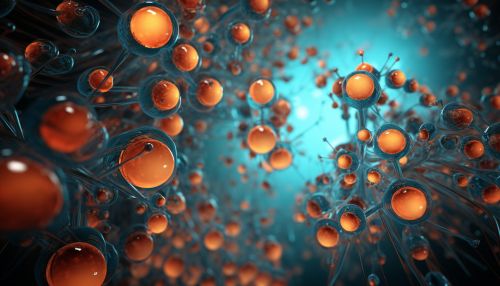Metabolism
Introduction
Metabolism refers to the chemical reactions that occur within a living organism to maintain life. These processes allow organisms to grow and reproduce, maintain their structures, and respond to their environments. Metabolism is usually divided into two categories: catabolism, the breaking down of organic matter, and anabolism, the building up of components of cells such as proteins and nucleic acids.


Overview
Metabolism is a complex process that involves a series of chemical reactions. These reactions are catalyzed by enzymes that allow the reactions to proceed quickly and efficiently. The metabolic process is a vital part of life, as it provides the energy and building blocks necessary for organisms to function and survive.
Catabolism
Catabolism is the set of metabolic pathways that breaks down molecules into smaller units to release energy. This process involves the breakdown of complex organic molecules into simpler ones. The energy released from these reactions is used to drive the reactions of anabolism.
Anabolism
Anabolism is the set of metabolic pathways that construct molecules from smaller units. These reactions require energy, usually in the form of ATP. Anabolic processes build up organs and tissues. These processes produce growth and differentiation of cells and increase in body size, a process that involves synthesis of complex molecules.
Energy Transfer
Energy transfer in metabolism occurs through the transfer of electrons from one molecule to another in redox reactions. These reactions involve the transfer of electrons from an electron donor to an electron acceptor. The energy released from these reactions is used to create a proton gradient, which is used to produce ATP, the energy currency of the cell.
Metabolic Pathways
Metabolic pathways are series of chemical reactions that occur within a cell. In each pathway, a principal chemical is modified by a series of chemical reactions. Enzymes catalyze these reactions, and often require dietary minerals, vitamins, and other cofactors in order to function properly.
Regulation of Metabolism
The regulation of metabolism involves maintaining an appropriate balance of molecules to meet the needs of the organism. This is achieved through the control of enzymatic activity. There are several levels of metabolic regulation. In intrinsic regulation, the metabolic pathway self-regulates to respond to changes in the levels of substrates or products. For example, a decrease in the amount of product can increase the flux through the pathway to compensate. This type of regulation often involves allosteric regulation of enzymes.
Disorders of Metabolism
Disorders of metabolism, also known as metabolic disorders, occur when abnormal chemical reactions in the body disrupt this process. These disorders can be congenital, meaning they are present at birth, or they can develop later in life. Some metabolic disorders can be managed by dietary measures, while others require lifelong treatment.
